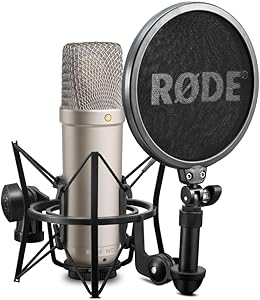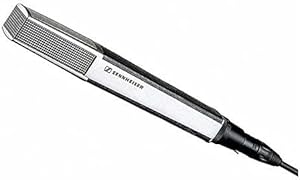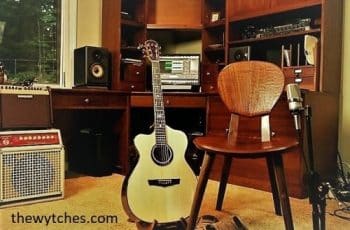Best Overhead Drum Mics Reviews offers a professional performance with extremely low noise and full frequency response, and at a very attractive price. If you’re figuring out how to mic your drums for a phase performance or a recording, you can’t truly go for just any type of microphone. You need to ensure you get the best drum mics. Anything that’s of much lower quality will just result in a calamity.
For professionals as well as workshop experts, the gold standard of what produces the best is the classic Neumann SKM 184. If you can afford that or you’re establishing your recording studio, then that’s what you require to obtain for your drums. It’s exceptional, however, it’s the kind of quality that includes a high rate.
Considering that not all of us can afford such a sector requirement, we’ve assembled a listing of still excellent alternatives that include comparable performance, however, with a more palatable price tag.
Contents
5 Best Overhead Drum Mics
1: Rode M5 Compact 1/2 ″ Condenser Microphone
The Rode M5 Compact Matched Pair offers excellent clarity and detail, perfect for capturing instruments and vocals. Its small diaphragm condenser design ensures accurate sound reproduction with minimal distortion. Ideal for stereo recording setups, this pair provides consistent quality with tight cardioid patterns. Durable and versatile, the M5 is suitable for both studio and live environments. For those seeking reliable, professional-grade microphones at an affordable price, the Rode M5 is a solid choice.
Specs:
- Type: Small-diaphragm condenser
- Polar Pattern: Cardioid
- Frequency Response: 20 Hz – 20 kHz
- Sensitivity: -38 dBV/Pa
- Max SPL: 130 dB
Pros:
- Excellent clarity and detail, ideal for capturing cymbals and hi-hats.
- Matched pair ensures consistent stereo imaging.
- Compact, lightweight design for flexible placement.
- Affordable price point for professional-quality sound.
Cons:
- Requires phantom power.
- Slightly less low-end response compared to large-diaphragm mics.
2: Samson C02 Pencil Condenser Microphones
Samson’s C02 Matched Pair brings studio-quality sound to your recording sessions, especially for instruments and dialogue. These pencil condenser mics feature cardioid capsules that reduce unwanted background noise, delivering clear and focused audio. With a frequency response tailored for natural sound, they’re great for capturing acoustic guitars, drums, and vocals. Their matched pair design ensures excellent stereo imaging. Budget-friendly and dependable, the Samson C02 is ideal for musicians and podcasters.
Specs:
- Type: Small-diaphragm condenser
- Polar Pattern: Cardioid
- Frequency Response: 20 Hz – 20 kHz
- Sensitivity: -40 dBV/Pa
- Max SPL: 130 dB
Pros:
- Crisp and clear sound, excellent for overhead drum capture.
- Matched pair offers consistent stereo imaging.
- Comes with shock mounts and clips.
- Budget-friendly option without sacrificing quality.
Cons:
-
Build quality is not as rugged as some competitors.
3: Rode NT1-A-MP Stereo Matched Set
The Rode NT1-A-MP is a versatile stereo condenser mic designed for vocal and studio use. Known for its ultra-low noise and smooth frequency response, it captures vocals with exceptional clarity and warmth. The cardioid pattern isolates sound sources effectively, reducing ambient noise. This microphone includes a matched pair setup for authentic stereo recordings, perfect for podcasts, vocals, and instrumentals. The NT1-A-MP is highly praised for delivering professional results at a competitive price point.
Specs:
- Type: Large-diaphragm condenser
- Polar Pattern: Cardioid
- Frequency Response: 20 Hz – 20 kHz
- Sensitivity: -32 dBV/Pa
- Max SPL: 137 dB
Pros:
- Extremely low self-noise (5 dBA), great for clean overhead captures.
- Wide frequency response with a smooth, warm tone.
- Robust construction and included pop shield.
- Versatile for vocals and drum overheads alike.
Cons:
-
A slightly larger diaphragm may pick up more room sound.
4: Shure KSM141/SL Dual-Pattern
Shure’s KSM141/SL stands out with its dual-pattern flexibility—switch between cardioid and omnidirectional to suit different recording needs. Its end-address design provides professional sound with detailed highs and natural lows, making it ideal for vocals and instruments. The rugged champagne finish adds a stylish, durable touch. This microphone offers exceptional transient response and low self-noise, perfect for studio and live settings. For versatility and pristine sound quality, the KSM141/SL is an excellent choice.
Specs:
- Type: Large-diaphragm condenser
- Polar Pattern: Switchable Cardioid/Omnidirectional
- Frequency Response: 20 Hz – 20 kHz
- Sensitivity: -32 dBV/Pa
- Max SPL: 136 dB
Pros:
- Switchable polar patterns offer recording flexibility.
- Exceptional clarity and detail with low noise.
- Rugged, high-quality metal body.
- Excellent transient response for cymbal and overhead capturing.
Cons:
-
More expensive than typical overhead mics.
5: Sennheiser MD 441-U
The Sennheiser MD 441-U is a dynamic super-cardioid microphone delivering exceptional audio clarity and feedback rejection. Its unique design excels in capturing vocals and instruments with precision, even in noisy environments. Known for its robust build and reliability, it’s popular among professionals for studio recording and live performances. The MD 441-U’s versatile frequency response and superior directional pattern make it a top choice for detailed, high-quality sound capture. Its classic black finish adds a sleek, professional look.
Specs:
- Type: Dynamic
- Polar Pattern: Super-cardioid
- Frequency Response: 30 Hz – 20 kHz
- Sensitivity: -52 dBV/Pa
- Max SPL: 150 dB
Pros:
- Exceptional feedback rejection for live overhead micing.
- Very high max SPL handling without distortion.
- Warm, punchy sound character suitable for rock drums.
- Durable and built for heavy use.
Cons:
-
Dynamic design is less sensitive to subtle cymbal details.
Why Do You Need Drum Mics?
The mics need to be above for the straightforward reason that there’s no other location for them. You can not have them right beside you, given that they would certainly just be in the way.
There are 2 basic reasons that you would certainly need a collection of overhanging mics. The first reason is for videotaping your beats. You can, after that, use it to blend with other tools or edit the beat with your music-modifying software.
The other primary reason for mics is to forecast the sound over a larger area. Certainly, drums are loud instruments. But also for stadiums, microphones are certainly going to be required to ensure that every person can hear them.
CONCLUSION
Get the Sennheiser. This is one more terrific example of German engineering, and the Sennheiser MD 441-U won’t let you down. It’s used by experts throughout the globe, as well as you get your money’s worth and extra. It can be used for numerous applications and instruments, it consistently records just what you want, and it also reduces sound very well.
It may be a little bit costly, but with proper care, it will certainly last you for a lifetime. Among the best overhead drum mics, this is the market criterion you can get without breaking the financial institution. You can refer to many of our products on the homepage: thewytches.com
Read more:







